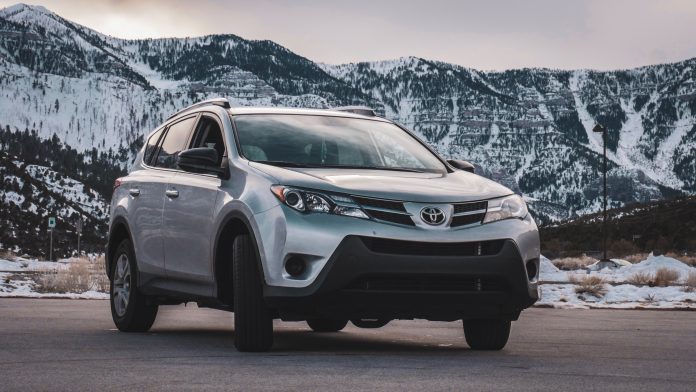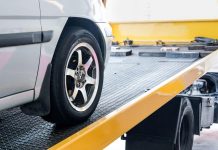Doing market research before talking to a car agent could be beneficial when buying a car. Factors like the car model, pricing, design, engines, fuel efficiency, and entertainment features. Most importantly, you should check out a car’s modern safety features.
Accidents could happen even to the most careful driver, and it’s important that your vehicle is equipped with the latest safety features that could reduce the severity of the crash and provide you with a higher degree of protection while on the road.
To help you determine which modern safety features you should consider, here’s a guide to help you.
Active Safety Features
The active safety features are mainly beneficial to prevent accidents and collisions. Cars with updated active safety features could be expensive. However, these days, you can get online loans no credit check to finance your ideal car with the necessary active safety features without the hassle of the traditional credit assessment.
To know more about the modern active safety features, here’s a list we’ve prepared for you.
● Adaptive Cruise Control (ACC)
The Adaptive Cruise Control feature of a car automatically controls the acceleration and braking of a vehicle. You can activate it by pressing the button located on the steering wheel. It can be deactivated by another button or by braking manually.
This feature started as a costly and exclusive feature to luxury cars, but now that cheaper sensors are available in the market, it has become a standard feature in many modern cars.
● Forward Collision Warning (FCW) with Automatic Emergency Braking (AEB)
The features are specifically intended to help you avoid running into other vehicles and pedestrians, among other objects found on the road. These features work through a combination of cameras and sensors that scan the road as far as 200 meters ahead, giving you more warning when traveling faster.
● Lane Departure Warning and Lane Keeping Assist
When you drive out of the detected lane, the Lane Departure Warning will alert you so you can return safely to your lane. Meanwhile, the Lane Keeping Assist feature keeps the car from drifting out of the lane.
These two come in a bundle with other safety features like autonomous emergency braking and adaptive cruise control.
● Anti-lock Braking System (ABS)
To avoid skidding, the ABS prevents your wheels from locking up when braking. This safety feature can assist drivers in controlling the wheel speed on slippery surfaces and loose gravel. This way, a vehicle can stop faster on most surfaces.
● Electronic Stability Control (ESC)
This safety feature comes with the Anti-Lock Braking System. ESC can identify critical driving situations and employ specific wheel brake pressure. It can aid the driver in taking control of the vehicles on rollover, icy, or wet roads.
Passive Safety Features
The Passive Safety Features protect the driver and passengers after a collision. It can only be activated after a collision, unlike the active safety features that attempt to avoid potential collisions.
● Advanced Airbag Systems
Today’s Advanced Airbag Systems are upgraded versions of regular airbag systems. It collects more specific information, like the passenger’s weight and seating position, making it less likely to deploy unnecessarily and improperly, potentially causing more risky injuries, especially in the occurrence of minor accidents.
Driver Assistance Systems
The Driver Assistance Systems help drivers avoid collisions by alerting them about potential hazards. This safety feature can also take over the vehicle in case to avoid such a critical scenario.
● Blind Spot Detection
Blind Spot Detection employs external sensors that monitor your blind spots and alert you when a car or any object is in your blind spot and may not be visible in your mirrors. With this safety feature, you can avoid potential collisions and accidents involving other vehicles.
● Rearview Camera and Parking Assist
Located in the rear hatch or trunk lid, Rearview Camera and Parking Assist display video to your central display screen and help you handle the car parking process easier.
● Tire Pressure Monitoring System (TPMS)
If your car’s tire inflation pressure falls below normal levels, the Tire Pressure Monitoring Systems will alert you through the car dashboard warning light. The TPMS can also reduce the vehicle’s fuel consumption and CO2 emissions as well.
Emerging Safety Technologies
If you’re interested in knowing which safety technologies are the most recent and in-demand, adaptive headlights, pedestrian detection, and automatic emergency braking are the ones you should first check out.
● Adaptive Headlights
This safety feature enables drivers to expand their field of vision by up to 15 degrees, illuminating objects that standard lighting can’t typically reach. This is a smart investment for those who frequently drive at night or on hills.
● Pedestrian Detection and Automatic Emergency Braking
This technology applies light automatic braking when it detects a risk of colliding with a vehicle or pedestrian in front of the car. If the driver does not decelerate after the light automatic braking, the system will apply automatic emergency braking to reduce the damage caused by a collision.
Conclusion
When purchasing a car, one should prioritize safety by ensuring that the vehicle they’re eyeing has updated car safety features like the ones we mentioned here.
Car safety technology continuously expands and advances, so it’s crucial that you know which features are available in the market and see if they will fit your needs and your budget as well.









































